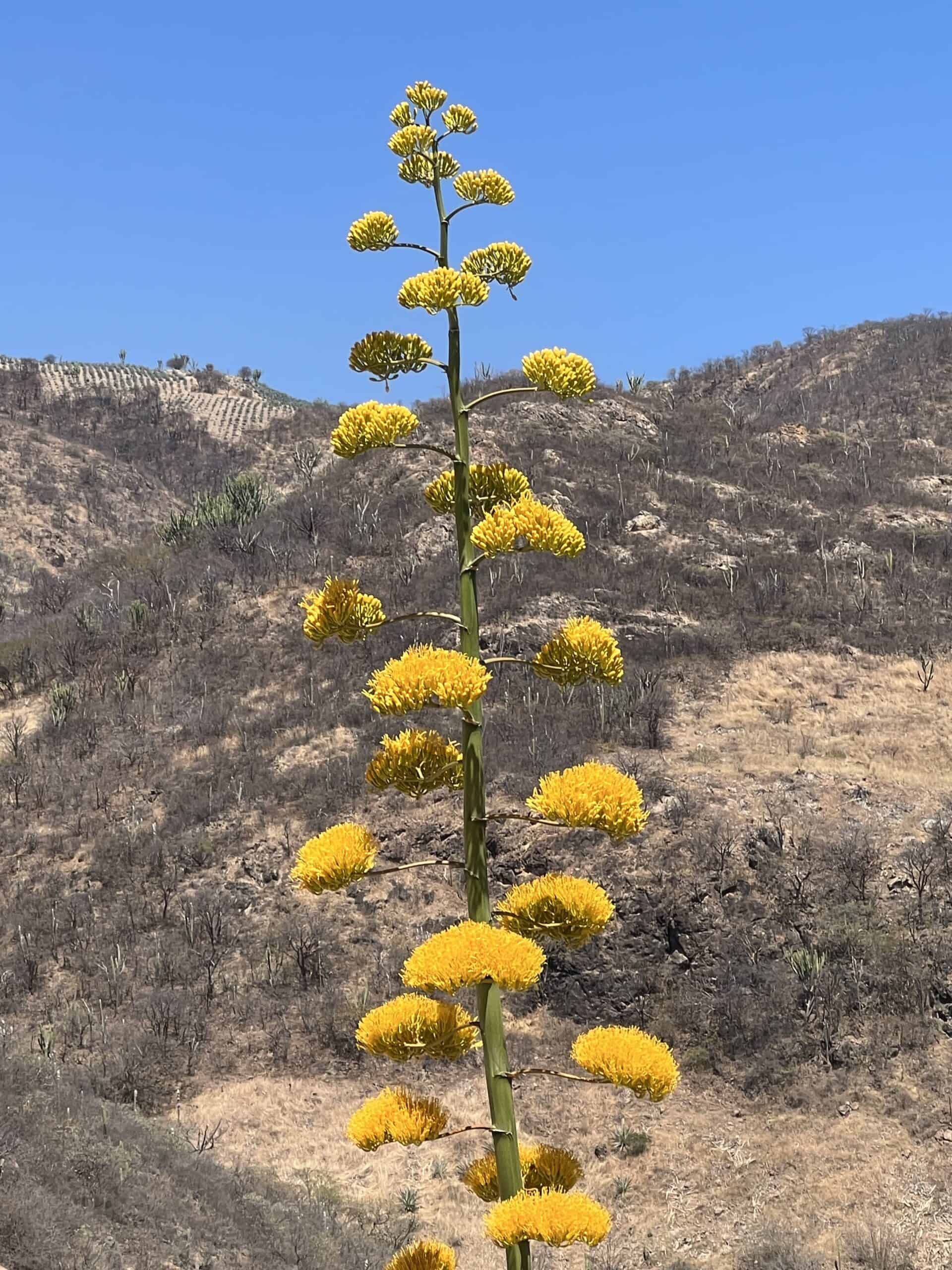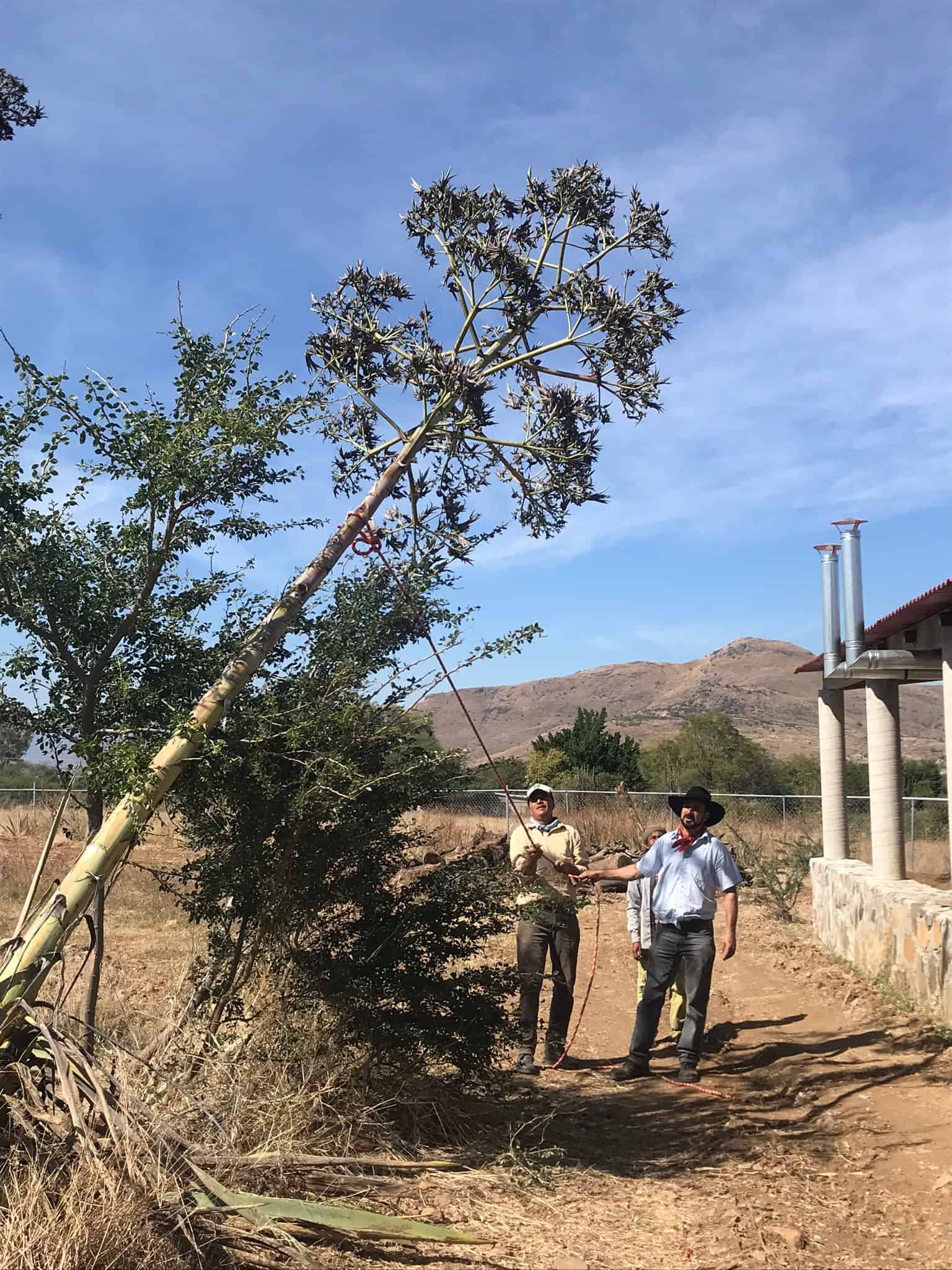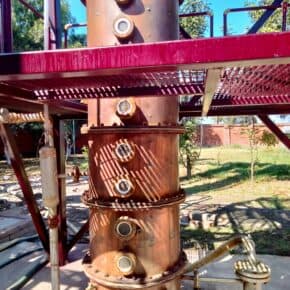A quiote is the stalk that shoots up from an agave plant when it’s ready to reproduce, and signals the eventual death of the agave plant. Quiotes can be dried and used as fuel, construction materials, food, or even as a decorative item. These flowering stalks are arguably the most dramatic element of the agave life cycle.
Why to producers remove the quiote? As the quiote grows, it diverts nutrients and sugars away from the agave hearts, or piñas. Producers keep an eye out for the first sign of the quiote, a shoot called the cogollo. The producer will then often cut the quiote so that the agave can be harvested before losing any sugar content.
Conscientious farmers will allow some quiotes to grow because the flowers give way to seeds, which ensure genetic diversity among the agave. The flowering stalks are also an important source of food for pollinators like bats and hummingbirds.



In Guerrero, a quiote is called a calehual, a Nahuatl word.
Read more of our entries in the Mezcalistas Encyclopedia of Mezcal and email us questions or ideas for future entries.













Leave a Comment